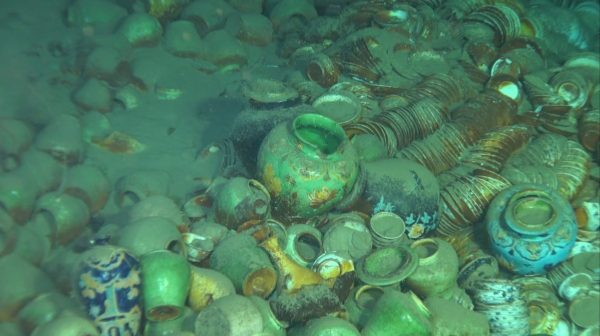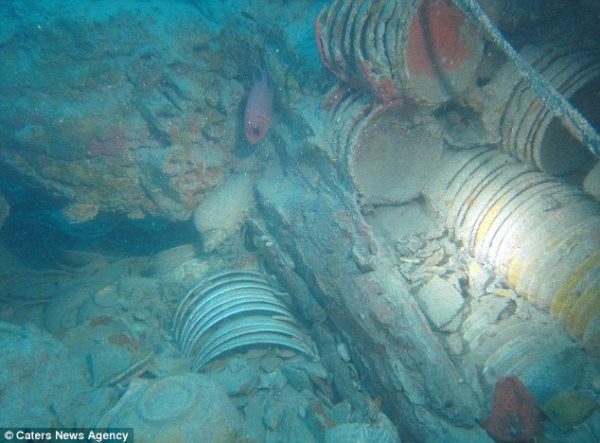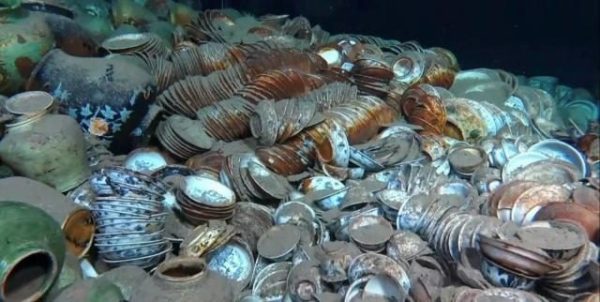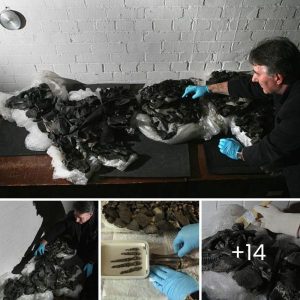In May 2023, two Chinese shipwrecks, dating to the Ming Dynasty (1506-1522), were discovered in the South China Sea, resting at a depth of 1,500 meters, marking a remarkable find of deep wrecks on such a scale for China. The two shipwrecks, designated No 1 and No 2, were found approximately 20 kilometers apart on the north-west continental slope off Sanya on Hainan island.

Wreck No 1 is known to be scattered across an area of about 10,000 square meters, with a large number of ceramics, some of which were found piled up to 3 meters deep above the vessel. While much of the ship remains buried in sand, awaiting excavation, the cargo recovered from this wreck provides valuable historical insights.
Analysis of the recovered samples suggests that the cargo was meant for export during the reign of Emperor Zhengde, the 11th ruler of the Ming Dynasty (1506-1521). The cargo includes blue-and-white porcelain, celadon pottery, green-glazed ceramics, and other styles that were produced in manufacturing centers at Jingdezhen and Longquan.

Wreck No 2 has been dated to the time of Emperor Hongzhi, who reigned from 1488 to 1505. Although this ship carries fewer ceramics, it is rich in preserved timber logs. The artifacts found in these shipwrecks offer important historical evidence related to the ancient Maritime Silk Road, as well as insights into Chinese overseas trade, navigation, and porcelain production.

Archaeologists from China’s National Cultural Heritage Administration and the Chinese Academy of Sciences’ Institute of Deep-Sea Science & Engineering have been working diligently to research and excavate these shipwrecks, and a series of 50 manned submersible dives are planned for the sites over the next 12 months.
The discoveries underline the significance of the Maritime Silk Road, showcasing the mutual exchange along this historical trade route.

This discovery demonstrates the dedication of Chinese experts in exploring their deep-sea heritage, with ongoing efforts to preserve, conserve, and promote international cooperation in the protection of underwater cultural relics. These ancient shipwrecks contribute to a deeper understanding of China’s maritime history and its role in historical trade, enriching the cultural heritage of the nation.





